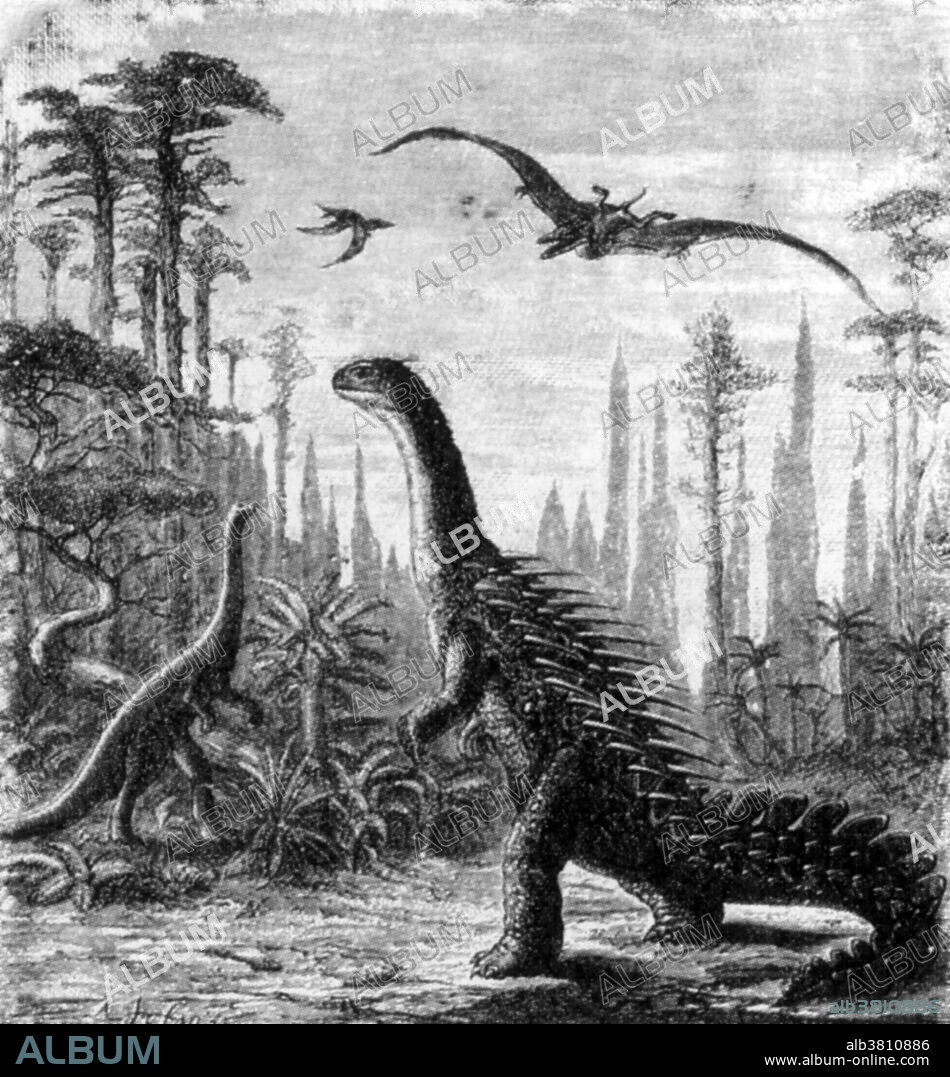alb3810886
Stegosaurus and Compsognathus Dinosaurs

|
Ajouter à une autre Lightbox |
|
Ajouter à une autre Lightbox |



Avez-vous déjà un compte? S'identifier
Vous n'avez pas de compte ? S'inscrire
Acheter cette image

Titre:
Stegosaurus and Compsognathus Dinosaurs
Légende:
Voir la traduction automatique
Dinosaurs of the Jurassic Period: Stegosaurus (right) with Compsognathus (left) and Pterodactyls flying. This inaccurate etching shows an early attempt by Othniel Charles Marsh to reconstruct a plated dinosaur from fossil evidence, with hedgehog spines instead of bony plates. Stegosaurus means "roof lizard" or "plated lizard". One of the various plated dinosaurs (Stegosauria) of the Late Jurassic Period (159 million to 144 million years ago) recognizable by its spiked tail and series of large triangular bony plates along the back. Stegosaurus usually grew to a length of about 21 feet, but some reached 30 feet. The skull and brain were very small for such a large animal. The forelimbs were much shorter than the hind limbs, which gave the back a characteristically arched appearance. The feet were short and broad. They are classified as a quadrupedal herbivorous ornithischian dinosaur. Compsognathus is a genus of small, bipedal, carnivorous theropod dinosaurs. Members of its single species Compsognathus longipes could grow to the size of a turkey. From Scientific American, November 29th, 1884.
Crédit:
Album / Science Source / New York Public Library
Autorisations:
Modèle: Non - Propriété: Non
Questions sur les droits?
Questions sur les droits?
Taille de l'image:
3328 x 3588 px | 34.2 MB
Taille d'impression:
28.2 x 30.4 cm | 11.1 x 12.0 in (300 dpi)
Mots clés:
 Pinterest
Pinterest Twitter
Twitter Facebook
Facebook Copier le lien
Copier le lien Email
Email
